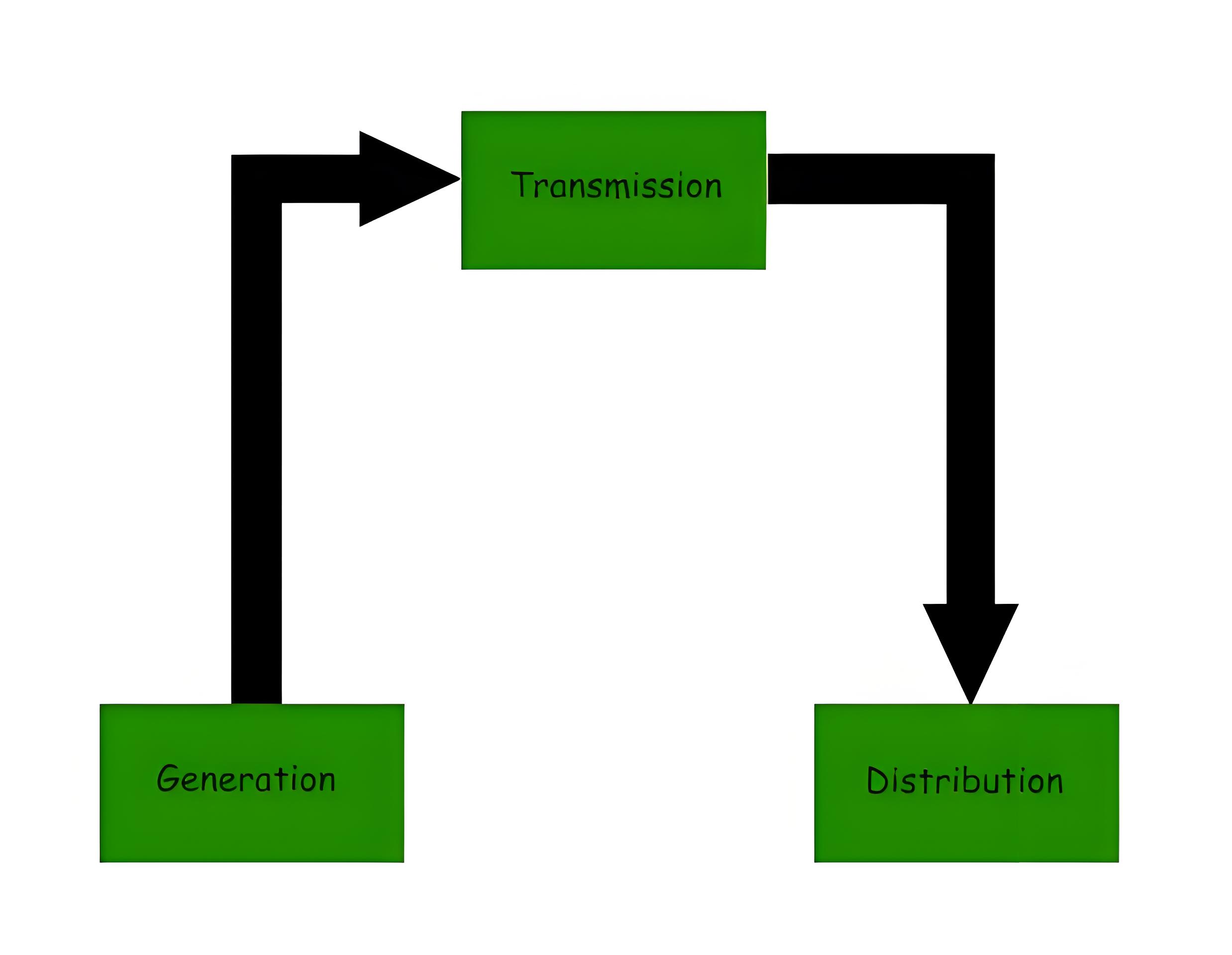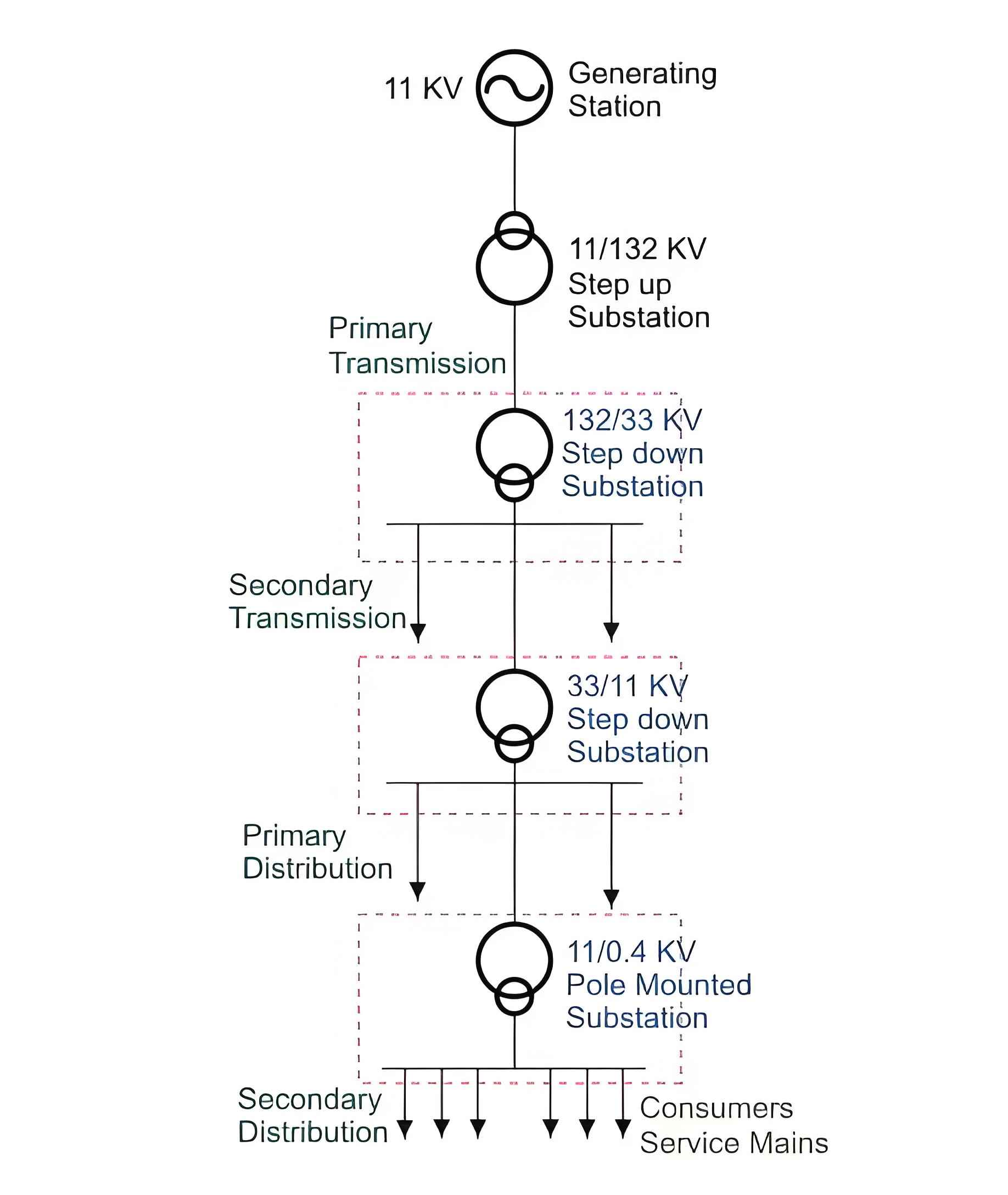Electric Supply System
Electrical Supply System Definition
An electrical supply system is defined as the network delivering electricity from generating stations to consumers, including transmission and distribution.
In the past, the demand for electrical energy was low, and a single small generating unit could meet the local needs. Now, with modern lifestyles, the demand has skyrocketed. To meet this growing demand, we need many large power plants.
However, building power plants near load centers, where many consumers are, is not always economical. It’s cheaper to build them near natural energy sources like coal, gas, and water. This means power plants are often far from where the electricity is most needed.
Thus we have to establish electrical network systems to bring the generated electrical energy from power generating station to the consumer ends. Electricity generated in the generating station riches to the consumers through the systems which we can divide into two main parts referred as transmission and distribution.
We call the network through which the consumers get electricity from the source as electrical supply system. An electrical supply system has three main components, the generating stations, the transmission lines and distribution systems. Power generating stations produce electricity at a comparatively lower voltage level. Producing electricity at lower voltage level is economical in many aspects.
The step-up transformers connected at the beginning of the transmission lines, increase the voltage level of the power. Electrical transmission systems then transmit this higher voltage electrical power to the possible nearest zone of load centres. Transmitting electrical power at higher voltage levels is advantageous in many aspects. High voltage transmission lines consist of overhead or/and underground electrical conductors. The step-down transformers connected at the end of the transmission lines decrease the voltage of electricity to the desired low values for distribution purposes. The distribution systems then distribute the electricity to various consumers according to their required voltage levels.

We typically use AC systems for generation, transmission, and distribution. For ultra-high voltage transmission, DC systems are often used. Both transmission and distribution networks can be overhead or underground. Overhead systems are cheaper, so they are preferred when possible. We use a three-phase, three-wire system for AC transmission and a three-phase, four-wire system for AC distribution.
Transmission and distribution systems can be divided into primary and secondary stages: primary transmission, secondary transmission, primary distribution, and secondary distribution. Not all systems have these four stages, but this is a general view of an electrical network.
Some networks might not have secondary transmission or distribution stages. In some localized systems, there might not be a transmission system at all. Instead, generators directly distribute power to various consumption points.

Let us discuss a practical example of the electrical supply system. Here generating station produces three-phase power at 11KV. Then one 11/132 KV step-up transformers associated with the generating station steps up this power to 132KV level. The transmission line transmits this 132KV power to 132/33 KV step down substation consisting of the 132/33KV step-down transformers, situated at outskirts of town. We will call that portion of the electrical supply system that is from 11/132 KV step-up transformer to 132/33 KV step down transformer as primary transmission. The primary transmission is 3 phase 3 wire system that means there are three conductors for three phases in each line circuit.
After that point in the supply system, the secondary power of 132/33 KV transformer gets transmitted by 3 phase 3 wire transmission system to different 33/11KV downstream substations situated at different strategic locations of the town. We refer this portion of the network as secondary transmission.
The 11KV 3 phase 3 wire feeders passing through roadsides of the town carry the secondary power of 33/11KV transformers of secondary transmission substation. These 11KV feeders comprise the primary distribution of the electrical supply system.
The 11/0.4 KV transformers in consumer localities step down the primary distribution power to 0.4 KV or 400 V. These transformers are called distribution transformer, and these are pole mounted transformer. From distribution transformers, the power goes to consumer ends by 3 phase 4 wire system. In 3 phase 4 wire system, 3 conductors are used for 3 phases, and the 4th conductor is used as the neutral wire for neutral connections.
A consumer can take the supply either in three phase or single phase depending on his requirement. In case of three phase supply the consumer gets 400 V phase to phase (line voltage) voltage, and for single phase supply, the consumer gets 400 / root 3 or 231 V phase to neutral voltage at his supply mains. Supply main is the end point of an electrical supply system. We refer this portion of the system that is from secondary of the distribution transformer to supply main as secondary distribution. Supply mains are the terminals installed at consumer premises from which the consumer takes connection for his uses.
The Electricity Encyclopedia is dedicated to accelerating the dissemination and application of electricity knowledge and adding impetus to the development and innovation of the electricity industry.













